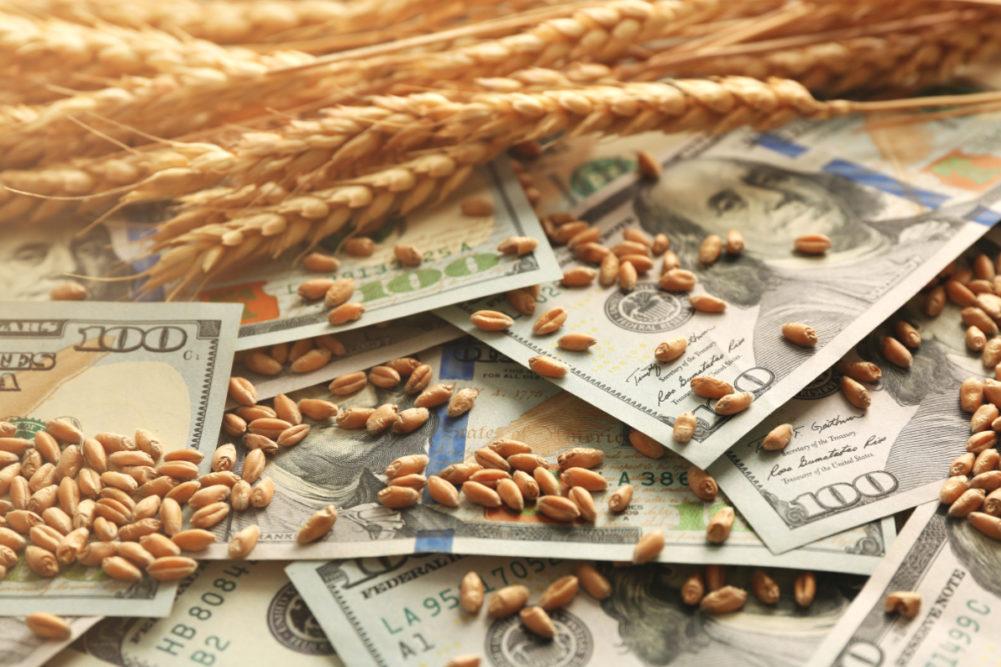WASHINGTON, DC, US — A $19 billion aid package to boost a US agriculture sector reeling from the effects of COVID-19 will feature direct payments to producers and purchase of agriculture products to feed the hungry, the US Department of Agriculture announced April 17.
The Coronavirus Food Assistance Program (CFAP) will draw from funds provided in the Coronavirus Aid, Relief and Economic Security Act (CARES), the Families First Coronavirus Response Act (FFCRA), and existing authorities, said Secretary of Agriculture Sonny Perdue.
“During this time of national crisis, President Trump and USDA are standing with our farmers, ranchers, and all citizens to make sure they are taken care of,” Perdue said. “The American food supply chain had to adapt, and it remains safe, secure and strong, and we all know that starts with America’s farmers and ranchers. This program will not only provide immediate relief for our farmers and ranchers, but it will also allow for the purchase and distribution of our agricultural abundance to help our fellow Americans in need.”
The CFAP comprises two main funding avenues, $16 billion in direct support of producers and $3 billion in purchase of agricultural products to feed the needy.
The first component bases direct support to farmers and ranchers on actual losses due to the impacts of COVID-19 on market prices and supply chains. The package aims to assist with adjustments and marketing costs stemming from lost demand and short-term oversupply for 2020.
Secondly, the USDA will purchase $3 billion in fresh produce, dairy and meat from local and regional distributors impacted by the loss of demand from a customer base that includes restaurants, hotels and other foodservice entities. A purchasing schedule issued by Perdue has the USDA buying $100 million per month in fresh fruits and vegetables, $100 million per month in dairy products and $100 million per month in meat products.
For the latter, the USDA will direct distributors and wholesalers to box a lineup of fresh produce, dairy and meat products and deliver them to non-profits serving Americans in need. Two main distribution points will be food banks, community organizations and faith-based organizations.
Further details were released by the office of Senator John Hoeven of North Dakota, chairman of the Senate Agriculture Appropriations Committee. The breakdown of $16 billion in direct assistance to farmers and ranchers is as follows: $9.6 billion for the livestock industry; $5.1 billion for cattle; $2.9 billion for dairy; $1.6 billion for hogs; $3.9 billion for row crop producers; $2.1 billion for specialty crops producers; and $500 million for others crops.
“We worked hard to provide USDA with additional resources to help our farmers and ranchers through this tough stretch, including $9.5 billion in emergency funding specifically for our ranchers and other specialty producers,” Hoeven said. “We appreciate the president and USDA Secretary Perdue working to get this round of assistance out quickly, and we will continue our efforts to ensure that these resources are used to assist our producers as effectively as possible. Our farmers and ranchers have continued to provide our nation with food, fuel and fiber during this pandemic, and we need to ensure they have the support necessary to continue their essential work.”
The USDA plans two additional funding routes for the purchase of food products from struggling producers for distribution to those in need. First, a supplementary $873.3 million available in Section 32 funding to be determined by industry requests, USDA agricultural market analysis, and food bank needs. Second, at least $600 million of the $850 million provided by the FFCRA and CARES acts for food bank administrative costs and USDA food purchases will be designated for food purchases as determined by food bank need and product availability.
Prominent leaders of grower groups praised the funding effort.
“NAWG applauds the agency for putting the program together so promptly and we look forward to seeing details about how the program will work,” said Dave Milligan, a Cass City, Michigan, US, wheat grower and president of the National Association of Wheat Growers. “NAWG looks forward to working with the USDA and Congress to ensure that the needs of wheat growers are addressed during the COVID-19 national emergency.”
Kevin Scott, vice president of the American Soybean Association, added, “A clear need for additional aid was expressed by the bulk of soy growers who responded to the COVID-19 survey, so (the aid) could not be more timely. We appreciate USDA and the administration for their continued support of agriculture during the coronavirus pandemic and especially appreciate that CFAP will include soy.”
Kevin Ross, president of the National Corn Growers association, said, “Agriculture is facing immense uncertainty amid the COVID-19 pandemic. This much-needed relief will not only provide direct assistance to our nation’s corn farmers but also deliver much-needed relief to our customers who produce and feed livestock. We thank Secretary Perdue for acting quickly and look forward to working with USDA on further program details.”
The USDA’s latest aid and assistance effort follows a bevy of action the Department has taken to keep food-insecure populations fed and to secure supply chains amid the ongoing COVID-19 pandemic.
Such efforts include expanded flexibility for food assistance programs in 50 states and meal deliveries to students whose rural schools are closed. To keep supply chains moving, the Department has indicated flexibilities in the distribution of certain products such as eggs and dairy, and eased producers’ paths to loan flexibilities, deferrals and maturity extensions.
Follow our breaking news coverage of the coronavirus/COVID-19 situation.






